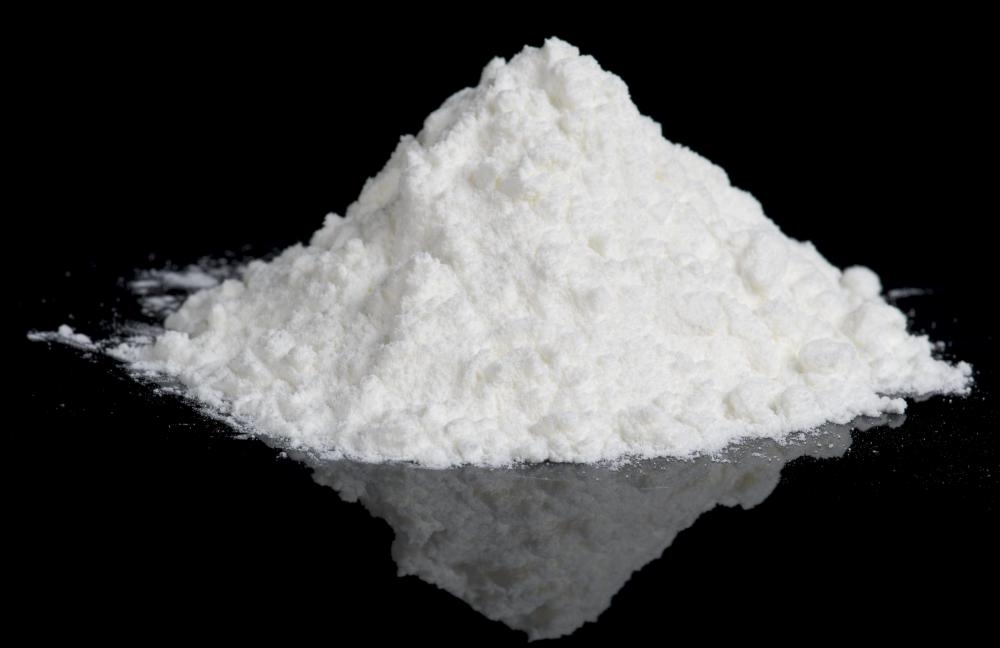At WiseGEEK, we're committed to delivering accurate, trustworthy information. Our expert-authored content is rigorously fact-checked and sourced from credible authorities. Discover how we uphold the highest standards in providing you with reliable knowledge.
What are Some Plaster of Paris Molds?
Plaster of Paris molds are created specifically for casting plaster into specific sizes or shapes. There are companies that produce molds especially for use with plaster of Paris, and in a wide variety of shapes -- from school buses and animals, to stepping stones and religious symbols.
Plaster of Paris is a gypsum-based white powder that becomes a pasty substance when combined with water. It can be poured or sculpted while wet, and hardens to a solid creation. It is most commonly poured into a mold. The choices for laster of Paris molds are wide and varied.

These plaster of Paris molds are not the only option for casting, however. The smooth-drying nature of plaster of Paris makes it easy to use with almost any plastic mold. This greatly expands the size and variety of molds available to you. Soap molds, candle molds, and candy molds all work well with plaster. The smaller size of most candy molds make them perfect for creating small ornaments, for example.

Any casting can be modified while it is damp. After the mold is poured, allow it to dry for a few minutes. Press stamps or hand prints into the plaster while it is still wet. It should hold the shape of the object. If it does not, wait a couple of minutes and try again. This is a popular and simple way to preserve a child's hand prints and footprints, although does not allow for the detail that some prefer to have.
Another option for casting is to create your own plaster of Paris molds. One method of doing this is with sand. Place slightly damp sand in a shallow pan and press any object into the sand. For example, press a hand or other object into the sand and hold it steady until the sand holds the shape. Remove the object. Pour the plaster into the new print and allow it to dry. As with the pressing method, this method does not give a great deal of detail to the newly created plaster casting.
Another method to create plaster of Paris molds is to use clay. This method allows for a greater amount of detail on the cast and is preferred among most artists and those who regularly work with plaster. Any modeling clay will work well. Lay out the clay on a flat surface and press the hand or other object into the clay. The plaster can be poured directly into the clay and allowed to dry. Once the plaster is dry, simply peel off the clay.
AS FEATURED ON:
AS FEATURED ON:












Discussion Comments
One year for Halloween we made our own face casting molds with plaster of Paris. This is very easy to do and a lot of fun as well.
We bought the plaster of Paris at our local hardware store and used this along with water to make the mixture for the molds.
To shape them to your face, we applied something like Vaseline all over our face so the mold would come off easily. We also put straws in each nostril so we would be able to breathe as we were making the mold to our face.
It works best if you do this on another person instead of trying to do it yourself. It took about 20 minutes for the plaster of Paris to get hard and create the mold.
I make a lot of my own soaps for myself and to give as gifts to family and friends. Since I started making my own molds I have really expanded my soap designs.
It is also fun to custom create molds for a special person or occasion. I also use silicone molds for this purpose. With silicone molds I can get very detailed molds that come out nicely.
My plaster of Paris molds are not as ornate, but I can still make some interesting shapes with them.
I have plaster of Paris cement molds that have the hand prints of everyone of my kids. For some of my kids I have more than one size of these molds.
I think these are very common gifts that parents receive from their kids. I think the daycare where some of my kids went often did this for a Mother's Day gift.
The kids love to make them, and they are great reminders of when your kids were young. I know some parents have even done this when they are infants, but I think it is fun for the kids to make them and give them as a gift.
When my dog was sick, she was seen at a veterinary college/clinic a few times. This is where she was when I had to have her put to sleep.
Anyone who has ever had to do this for a loved pet understands how hard this is. I was surprised a week or so later when I received a small package in the mail from the vet clinic.
They had made either a plaster of Paris or a clay mold that had the paw print on my dog impressed into it. They had also written her name on the mold.
I was not expecting this and I still have this mold sitting on my desk as a reminder of her. I thought this was a very nice gesture that is probably very much appreciated by everyone who receives one.
Post your comments